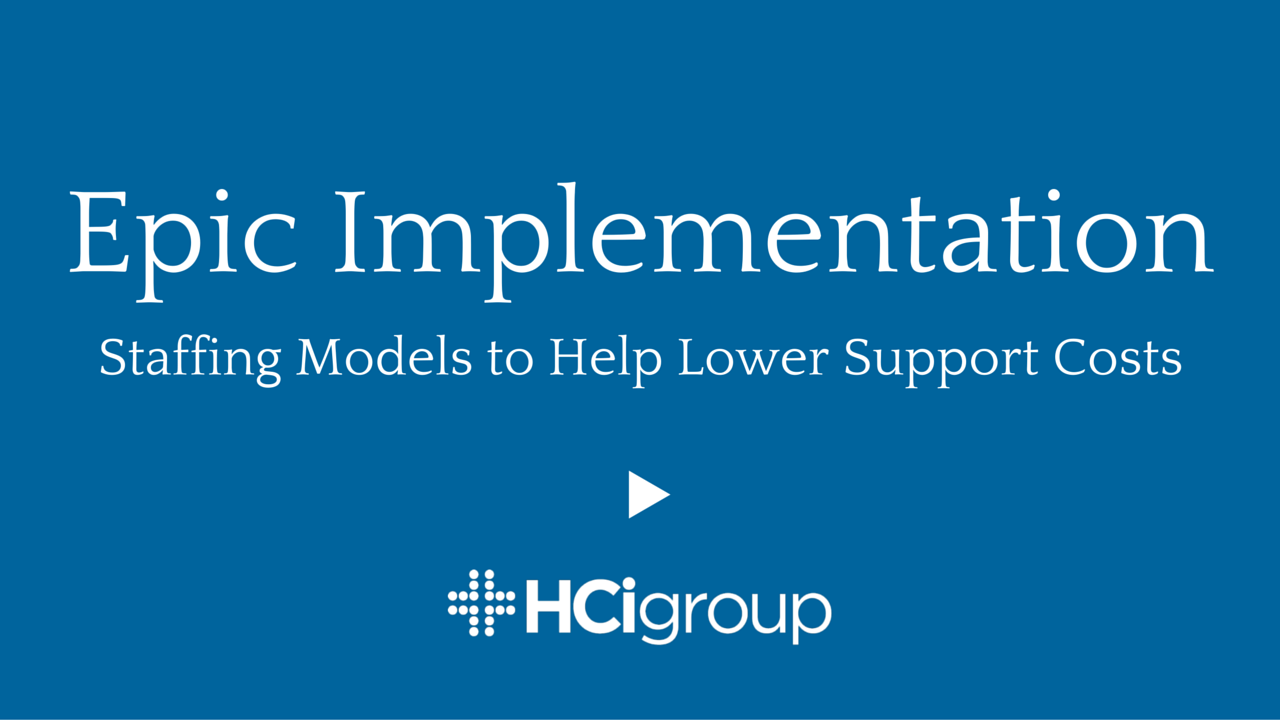Epic Implementation: Staffing Models to Help Lower Support Costs (Video)

In our most recent Epic Implementation video, COO Mike Sinno discusses several types of staffing models that can help you lower the support costs of your Epic EMR. Watch the video or read the transcript below for tips on how to effectively leverage your resources for break/fix maintenance, implementations and optimization efforts, and scheduled rounding.
Transcript:
Break/Fix Maintenance
There’s no doubt that there will be an increase in staff. You’ll need additional resources not just to get you through the go-live from a project standpoint, but also to satisfy the requirements of supporting Epic post-implementation. There are more demands on a sophisticated system and higher expectations from the organization, as there should be based on the level of investment required. Balancing how you’re going to support Epic along with optimizing, while also expanding upon it at the same time with the same resources, could be a challenge.
A model we propose is retaining dedicated resources that are focused on nothing but break/fix, or “keep the lights on activity” (KTLO)—that is to say, things that were working yesterday are now broken today and need to be remediated and returned back to service. It can often be just the basic maintenance of Epic, as well. There are point releases. There are major upgrades that require planning for increased capacity for those projects. One of the things that you, as a CIO, commit to by going with Epic is adhering to a good maintenance program. That requires you to plan for an Epic upgrade at least once every 18 months. Proactively working that into your budget and including it in your resource management plan, rather than it being a surprise, is key for success.
Epic Implementation & Optimization
So, you’ll have resources dedicated to break/fix and keeping the lights on. You’ll also need to make sure your other resources are focused on project implementations and optimization. Confirm that your optimization team goes back to the areas that were implemented and actively looks for additional opportunities for optimization.
Rounding
Additionally, a key area for support is general rounding. Whether it’s for break/fix or optimization efforts, have those Epic analysts go back out onto the floors and into the ambulatory clinics to see what’s working and what’s not working. This needs to be set up on a recurring schedule. If you know somebody is coming out on a recurring basis, there’s an inclination not to call into a service desk, especially if it’s not urgent. Your staff will know somebody is coming that they can articulate their needs to and can show them what’s deficient in their work flow, as opposed to having a mediator at a normal service desk translate that for them. This strategy, in and of itself, often lowers your overall support costs.
You may also be interested in:
- Epic Implementation Guide
- Epic Service Desk – Why Analytics Hold The Key
- Beyond the Clinical Service Desk: Sustaining Your EHR in Austerity
- Epic Service Desk – Why Should an Organization Invest?
Michael has 23 years of information technology and 13 years of healthcare experience as a healthcare IT Executive. He is responsible for the management of HCI solutions and oversight of operations and delivery. Michael has successfully led implementations and the subsequent support of both large scale Epic and Cerner Electronic Health Records in the capacity of CIO within two Academic Medical Centers. Also a former CTO, he is technologically fluent and operationally disciplined, providing leadership and efficiency in organizations that view technology as a business catalyst and force multiplier.

